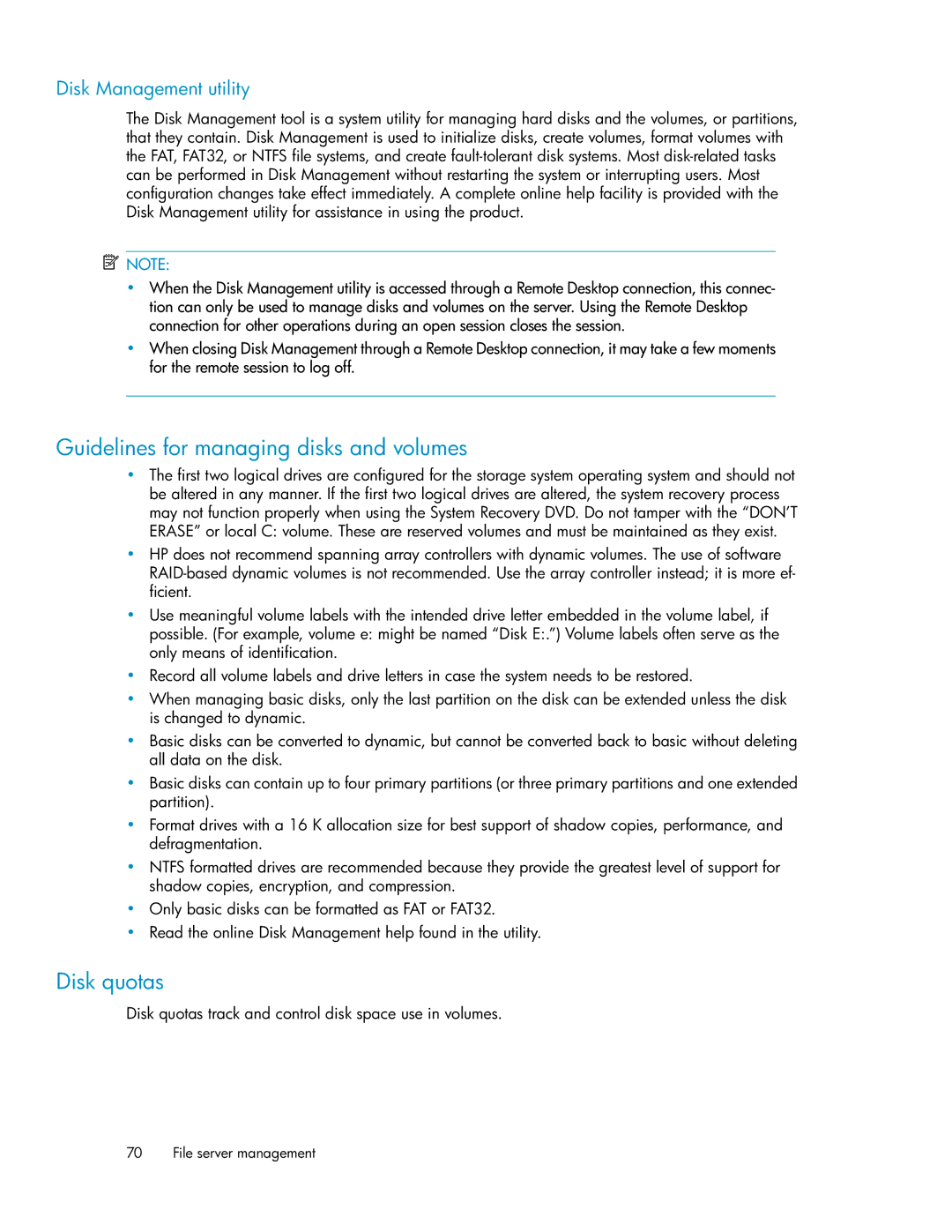
Disk Management utility
The Disk Management tool is a system utility for managing hard disks and the volumes, or partitions, that they contain. Disk Management is used to initialize disks, create volumes, format volumes with the FAT, FAT32, or NTFS file systems, and create
![]() NOTE:
NOTE:
•When the Disk Management utility is accessed through a Remote Desktop connection, this connec- tion can only be used to manage disks and volumes on the server. Using the Remote Desktop connection for other operations during an open session closes the session.
•When closing Disk Management through a Remote Desktop connection, it may take a few moments for the remote session to log off.
Guidelines for managing disks and volumes
•The first two logical drives are configured for the storage system operating system and should not be altered in any manner. If the first two logical drives are altered, the system recovery process may not function properly when using the System Recovery DVD. Do not tamper with the “DON’T ERASE” or local C: volume. These are reserved volumes and must be maintained as they exist.
•HP does not recommend spanning array controllers with dynamic volumes. The use of software
•Use meaningful volume labels with the intended drive letter embedded in the volume label, if possible. (For example, volume e: might be named “Disk E:.”) Volume labels often serve as the only means of identification.
•Record all volume labels and drive letters in case the system needs to be restored.
•When managing basic disks, only the last partition on the disk can be extended unless the disk is changed to dynamic.
•Basic disks can be converted to dynamic, but cannot be converted back to basic without deleting all data on the disk.
•Basic disks can contain up to four primary partitions (or three primary partitions and one extended partition).
•Format drives with a 16 K allocation size for best support of shadow copies, performance, and defragmentation.
•NTFS formatted drives are recommended because they provide the greatest level of support for shadow copies, encryption, and compression.
•Only basic disks can be formatted as FAT or FAT32.
•Read the online Disk Management help found in the utility.
Disk quotas
Disk quotas track and control disk space use in volumes.
70 File server management
